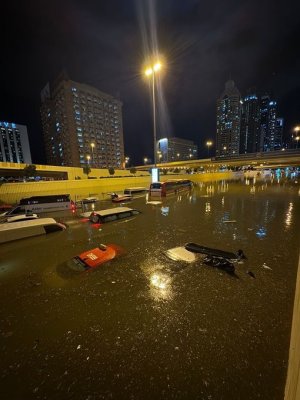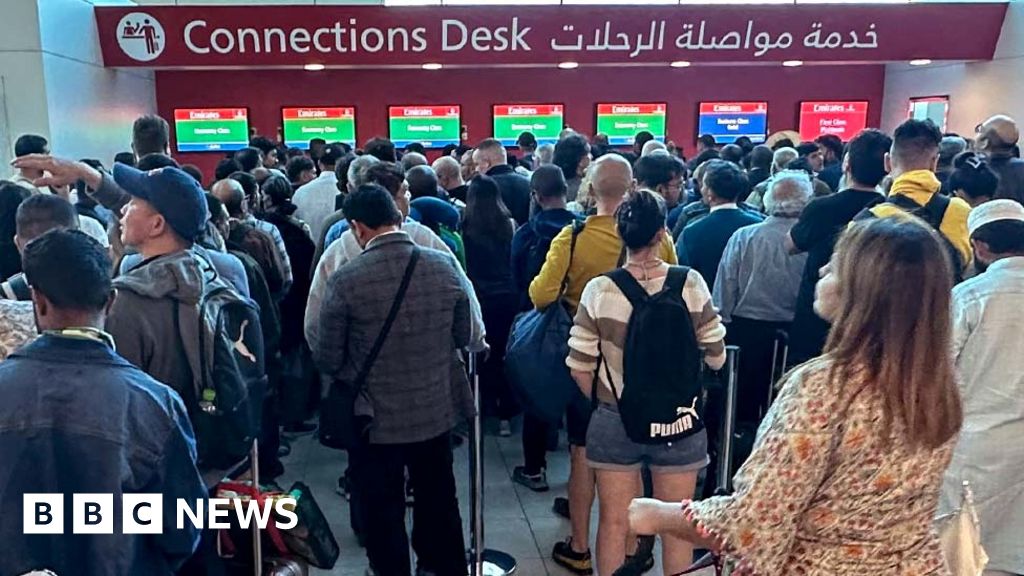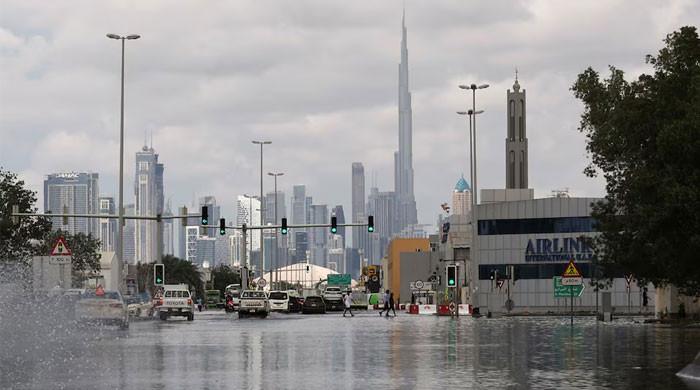Abdullah719
T20I Captain
- Joined
- Apr 16, 2013
- Runs
- 44,825
UAE residents across the emirates are experiencing rain and thunder and yes, cloud seeding has something to do with it.
According to an official from the National Center of Meteorology (NCM), the ongoing cloud seeding process that took place yesterday, today and will continue tomorrow around the UAE is enhancing the amount of rain.
The official told Gulf News that whenever there are convective clouds, cloud seeding is carried out as it increases the chance and amount of rain.
Unstable weather conditions have been predicted until tomorrow with rainfall and strong winds.
The official also said that such conditions arise as the season transitions from summer to autumn.
The weather conditions are unrelated to the tropical storm Maha that hit the region earlier.
The weather bureau has issued a yellow and red alert for UAE residents until tomorrow because of the storm-like conditions.
The sea at the Arabian Gulf is rough to very rough with waves reaching 9 feet in height.
Strong winds are also expected to blow dust and sand into the air so take precautions when going outside.
https://gulfnews.com/uae/weather/ua...hunder-in-dubai-cloud-seeding-1.1573376908343
<blockquote class="twitter-tweet" data-lang="en"><p lang="en" dir="ltr">Vehicles parked on a water-logged road following heavy rain in Dubai on Sunday, November 10, 2019. <a href="https://t.co/0PbL2m0ngF">pic.twitter.com/0PbL2m0ngF</a></p>— Gulf News (@gulf_news) <a href="https://twitter.com/gulf_news/status/1193463385591099395?ref_src=twsrc%5Etfw">November 10, 2019</a></blockquote>
<script async src="https://platform.twitter.com/widgets.js" charset="utf-8"></script>
<iframe src="https://player.vimeo.com/video/372180102?byline=0" width="640" height="1131" frameborder="0" allow="autoplay; fullscreen" allowfullscreen></iframe>
According to an official from the National Center of Meteorology (NCM), the ongoing cloud seeding process that took place yesterday, today and will continue tomorrow around the UAE is enhancing the amount of rain.
The official told Gulf News that whenever there are convective clouds, cloud seeding is carried out as it increases the chance and amount of rain.
Unstable weather conditions have been predicted until tomorrow with rainfall and strong winds.
The official also said that such conditions arise as the season transitions from summer to autumn.
The weather conditions are unrelated to the tropical storm Maha that hit the region earlier.
The weather bureau has issued a yellow and red alert for UAE residents until tomorrow because of the storm-like conditions.
The sea at the Arabian Gulf is rough to very rough with waves reaching 9 feet in height.
Strong winds are also expected to blow dust and sand into the air so take precautions when going outside.
https://gulfnews.com/uae/weather/ua...hunder-in-dubai-cloud-seeding-1.1573376908343
<blockquote class="twitter-tweet" data-lang="en"><p lang="en" dir="ltr">Vehicles parked on a water-logged road following heavy rain in Dubai on Sunday, November 10, 2019. <a href="https://t.co/0PbL2m0ngF">pic.twitter.com/0PbL2m0ngF</a></p>— Gulf News (@gulf_news) <a href="https://twitter.com/gulf_news/status/1193463385591099395?ref_src=twsrc%5Etfw">November 10, 2019</a></blockquote>
<script async src="https://platform.twitter.com/widgets.js" charset="utf-8"></script>
<iframe src="https://player.vimeo.com/video/372180102?byline=0" width="640" height="1131" frameborder="0" allow="autoplay; fullscreen" allowfullscreen></iframe>








